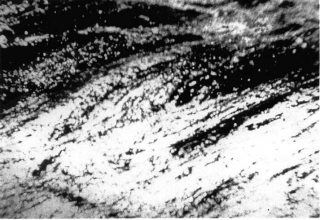Ken Jacobs’ Nervous System: 1
Date: 3 November 2000 | Season: Ken Jacobs Nervous System, London Film Festival 2000 | Tags: London Film Festival
KEN JACOBS’ NERVOUS SYSTEM: 1
44th Regus London Film Festival
Friday 3 November 2000, at 7:30pm
INSTRUCTIONS TO AUDIENCE
In order to appreciate the added depth of the Pulfrich 3D effect, the viewer should use the “Eye Opener” filter during both of the works presented in this programme. Please return the filter to cinema staff after the performance.
OPENING THE NINETEENTH CENTURY: 1896
Ken Jacobs, USA, 1990, Pulfrich 3D 16mm, colour, sound, 11 min
Shafting the screen: the projector beam maintains its angle as it meets the screen and keeps on going, introducing volume as well as light, just as in Paris, Cairo and Venice of a century ago happen to pass. Passing through the tunnel mid-film, a red flash will signal you to switch your single Pulfrich filter before your right eye to before your left (keep both eyes open). Centre seating is best: depth deepens viewing further from the screen. Handle filter by edges to preserve clarity. Either side of filter may face screen. Filter can be held at any angle, there’s no “up” or “down” side. Also, two filters before an eye does not work better than one, and a filter in front of each only negates the effects. (Ken Jacobs)
BITEMPORAL VISION: THE SEA
Ken Jacobs, USA, 1994, Pulfrich 3D Nervous System, b/w, sound, c.70 min
Nervous System riff on 587 frames photographed by filmmaker Phil Solomon. This work was inspired, during a visit to Hamburg, by the photography of Daniel Maier-Reimer. The surface of water becomes a hugely 3D cosmic cataclysm; what’s up, what’s down, forward or back or solid or open becomes entirely unstable. The mind is soon at sea, Rorschaching like crazy in the effort to maintain equilibrium. (Ken Jacobs)
Suggestions for use of the neutral density (Pulfrich) filter for Bitemporal Vision: The Sea :-
Only one filter to each viewer. Filter is held before one eye, both eyes remaining open. Viewer decides when to view the film through the filter, and which eye to place it in front of. Middle viewing positions are best (as with all stereo).
It takes time to appreciate the changes, and to familiarise with the process. Sail through any initial discomforts; the brain is a muscle that can be sluggish and grumpy when asked to learn new tricks.
The image is strongly 3D even without the filter but the filter will strongly enhance the depth. It can also radically change arrangement in depth. Choice of eye determines which parts of the scene are in front of or in back of other parts, and in which direction movement flows. The more abstract and non-representational the scene – releasing the mind from its knowledge of physical law and its expectations re. behaviour of objects in space – the more it is that changes can be seen; that is, acknowledged by the mind. So I suggest using the filter most intensively when this depiction of water is least recognisable as water. (Two straightforward camera takes are the basis of Bitemporal Vision: The Sea, but departure from the familiar will be unmistakable.) Try it, for instance, when the overall scene becomes lighter in tone following the first advancing wave. (A wave rumbling forward slightly below eye level…that will transform to a massive cloud form moving overhead …)
It may take a minute to adapt to the filter before seeing its effect. Hang in with it and more visual events will become apparent, all the drama and struggle and comings and goings of the details. Placing the filter left or right, to match the direction to which a form is moving, will advance that form towards the viewer. The filter can also convert a solid form into an open space, and (switch filter) vice-versa.
(Ken Jacobs)
FURTHER NOTES